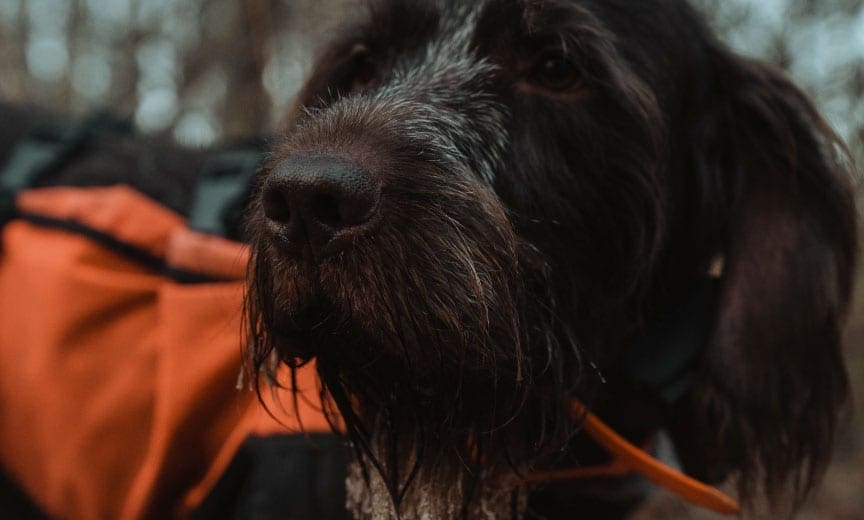Nasal discharge is seen most commonly with diseases of the nasal passages, sinuses and nasopharynx. Occasionally disease involving the lower airways (trachea, bronchi, etc) can result in nasal discharge.
Dr. Joe Spoo explores minor to major nose issues that can occur in the field with hunting dogs
If you run hard-charging dogs long enough you are guaranteed to encounter issues with their nose. These can range from minor irritation to a severe trauma related to something jammed up the nose. Understanding how to recognize these various concerns, and more importantly how to address them, is a vitally important component to keeping your pup in the field the entire hunting season.
If you think about the heavy cover we ask these dogs to run through, the numerous obstacles and the fact they are leading with their noses, it’s shocking that we don’t see more traumatic injuries. However, when they do occur, it’s important to be able to recognize when there’s a problem, the degree of the problem and whether it’s something you can address yourself or if it’s something that needs the attention of your veterinarian.
Years ago, on a South Dakota pheasant opener, we were hunting a little brushy draw through the middle of a cornfield when my English Setter. Maggie, started sneezing violently. I caught up to her and the blood was pouring out of her right nostril. I carried her back to the truck and her day was over. I sedated her to look with a scope but the amount of bleeding and trauma didn’t allow me to see much. I placed her on antibiotics and hoped for the best.
Over the month-long course of medications, she still had a small amount of discharge and my plan was to take her to the university for a CT at the end of the antibiotics as these were in the days before we had those capabilities in-house. Other than the discharge and occasional raspy, nasally breathing she continued to seem normal and so I continued to hunt her and she performed like a rockstar. We were wrapping up a three-day trip and I planned on her hunting one last spot. I opened the crate to get her out and she again started to sneeze violently. Out on the tailgate came an approximately four-inch long blood covered stick. I was shocked and amazed that this little dog had hunted for nearly a month with this thing jammed up her nose. To make it more impressive, shortly after sneezing it out she nailed a covey of sharptails in a stiff 25 mph wind.
Nearly two decades later I’m now more aggressive when a gun dog presents with her symptoms and make sure we find the offending stick, grass awn or weed as soon as possible. Unfortunately, these foreign body issues will require a trip to the vet clinic as these dogs need to be under heavy sedation and many times fully under anesthesia as the tissues of the nose are very sensitive. The good news is that removing them usually doesn’t require some fancy fiber optic scope or a rigid videoscope. The vast majority of these can be removed through an otoscope (the scope used to examine your dog’s ears) and with an alligator forceps. In rare occasions, some dogs will require more aggressive diagnostics, like a CT, and a flexible scope to get further into the nasal passages.

This article is available in full to registered subscribers
Sign up now to start a free trial to access all Vetlexicon articles, s, sounds and videos, or Login
History
Viral diseases are more commonly observed in non-vaccinated animals. Crowding and exposure to non-vaccinated animal populations predispose to viral infections as well. A young dog with recurrent infections of the lower respiratory tract might raise suspicion of ciliary dyskinesia. A dog or cat that previously had a dental extraction and now has a mucopurulent nasal discharge may have an oronasal fistula. An acute onset of sneezing and facial rubbing should raise suspicion of a foreign body.
FAQ
How much does a nasal scope cost for a dog?
How do I know if my dog has something stuck in his nose?
Endoscopies for dogs usually cost between $800 and $2,000. This cost will vary depending on the scope of the treatment, the site of the endoscope insertion and areas of exploratory inspection, the medications required, such as the anesthesia, and your veterinarian’s fees.
Can I put saline in my dog’s nose?